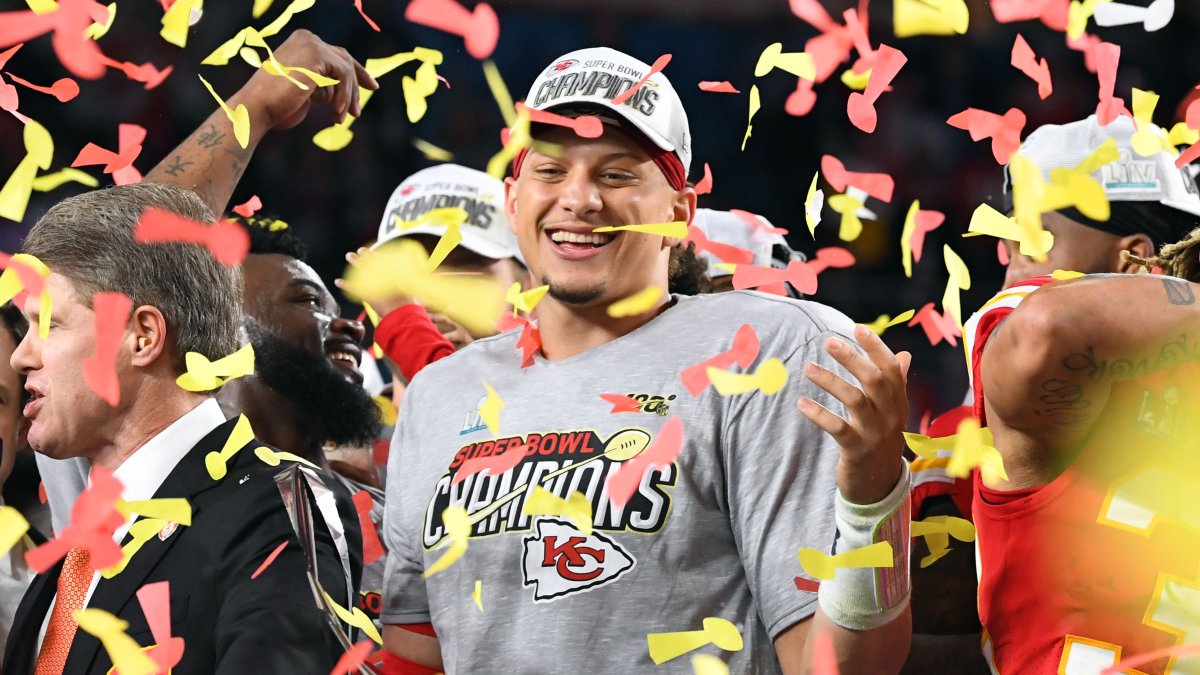Of the many storylines you expect in the wake of the Super Bowl, controversy over the chosen MVP is fairly normal. When Patrick Mahomes was named to the honor, after what was viewed as a subpar game, calls from many for a more deserving choice rang out with the name Damien Williams.
Slept on it – albeit for only two hours – and still believe Damien Williams was the MVP of that game
— Jason La Canfora (@JasonLaCanfora) February 3, 2020
Superficially, Williams had a strong game: 17 carries, 104 rushing yards, four receptions, 29 receiving yards, and two touchdowns. Mahomes, on the other hand, threw two critical interceptions and had a pedestrian 286 passing yards.
Looking beyond the traditional box score towards value-based metrics, like expected points added, takes us to a different conclusion, one that emphasizes the plays that truly make an impact on the game, and don’t ignore the critical third-down conversions that Mahomes made scrambling and running the ball.
Expected points added
Every play based on the situation (down, distance, field position, etc.) before and after the play can tell us how much value was added on the play in terms of expected points. That’s what makes EPA the preferred stat to measure players when yards and touchdowns can be gained in different manners and have different importance depending on the difficulty of the situation.
Can’t ignore Mahomes the runner
If you only compare Mahomes as a passer and Williams as a runner, the case can be made that the second was the MVP. Mahomes generated only 1.1 EPA when you net two costly interceptions (-7.9 EPA) and three sacks (-4.1 EPA) from his positive passing (+13.1 EPA). Williams generated 5.4 EPA rushing the ball.
But what’s missing when you only concentrate on the passing numbers for Mahomes is the value he produced on the ground.
| Player | Scramble | Designed Run | Total |
| Patrick Mahomes | 5.8 | 1.3 | 7.1 |
Mahomes was the most valuable player on the ground, despite the fact that he only totaled seven scrambles and designed runs, versus 17 rushing attempts for Williams.
When you look into the situational importance of Mahomes’ runs, you’ll understand why they generated such high EPA. Almost all were critical third-down conversions, which are generally the highest leverage plays in a game.
Mahomes’ scrambles included: picking up 11 yards on third-and-12 (converted on fourth down), five needed yards on third-and-5, nine yards on second-and-7, and 13 yards on second-and-19. He also had designed runs that resulted in a touchdown on second-and-goal from the 1, and gained six yards on first-and-goal from the 10.
These were all critical plays that Mahomes’ mobility made possible, yet they’ll mostly be overlooked when discussing his performance due to the misleading focus on a quarterback’s passing numbers.
Mahomes’ total EPA per play in the Super Bowl was 0.17, which is substantially higher than the average this season for all quarterbacks at only 0.03. This wasn’t a bad performance by Mahomes in terms of the value he added, especially when you consider the strength of the defense faced.
Williams’ performance in context
Even using advanced statistics like expected points added could lead some to conclude that Williams was the more valuable player.
Patrick Mahomes was named the Super Bowl LIV MVP but according to data from @TruMediaSports Damien Williams had the most expected points added (+9.3) followed by Sammy Watkins (+6.9), Mahomes (+5.8) and Travis Kelce (+5.2).
Fullback Kyle Juszczyk (+4.5) led the 49ers.
— Neil Greenberg (@ngreenberg) February 3, 2020
One obvious problem with this comparison is that the negative plays Mahomes made kneeling at the end of the game look to be included. Beyond unnecessarily lowering Mahomes’ total, Williams’ numbers are also misleading.
As I mentioned before, Williams generated 5.4 EPA on runs. The biggest EPA gainer, by far, was the 38-yard touchdown that sealed the game at 3.0 EPA. The thing is, that run was mostly a product of the defense playing all-out to stop the clock, and Williams play didn’t involve any spectacular effort on his part.
DAMIEN. WILLIAMS.
38-YARD TOUCHDOWN. #ChiefsKingdom
????: #SBLIV on FOX
????: NFL app // Yahoo Sports app pic.twitter.com/vfeysZKipJ— NFL (@NFL) February 3, 2020
Looking into the play further, the best decision that Williams could have made on the run would have been to convert the first down and then take a knee, which would have hurt his inflated EPA production, but ended the game with three more kneeldowns. Williams actually lowered the Chiefs win probability — though ever so slightly — by taking the run all the way to the house.
Williams EPA total also includes 3.5 generated as a receiver on his four catches. But it’s difficult to decide if that’s the proper way to allocate credit. The quarterback is hurt by lost EPA on incompletions and interceptions, looking at only passes caught excludes all negatives for the receiver. If you look at all plays in which Williams was targeted, his total value drops to 0.59 EPA as a receiver, or 0.10 EPA per target. Not a horrible total, but not the value you’d expect based on only including his positive plays.



 © 2025 PFF - all rights reserved.
© 2025 PFF - all rights reserved.